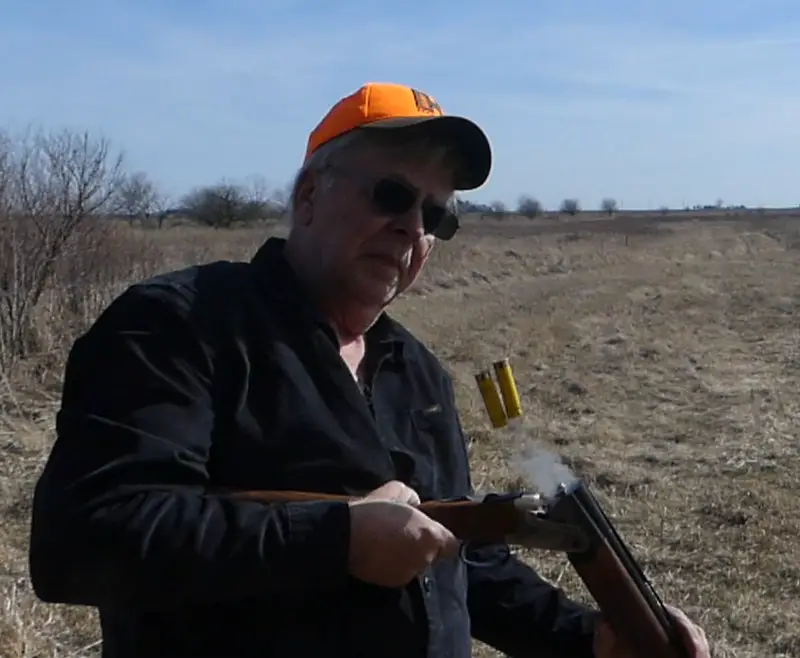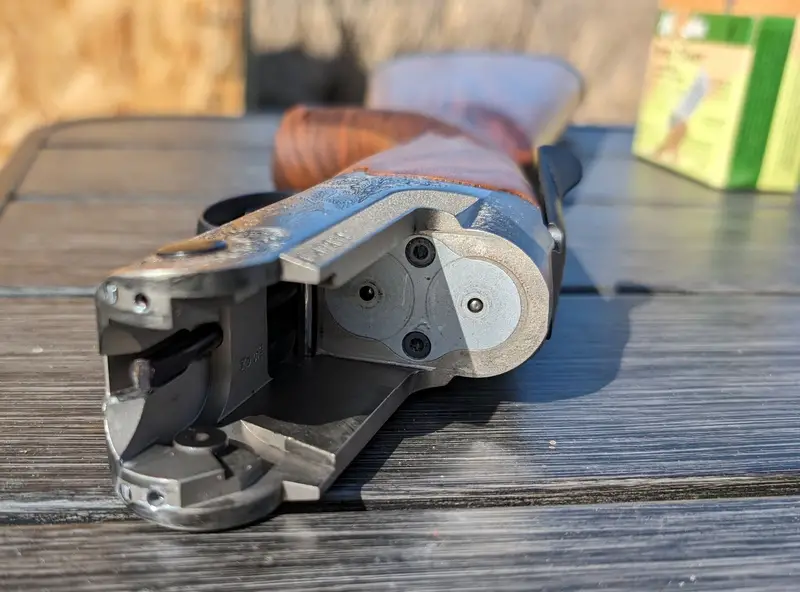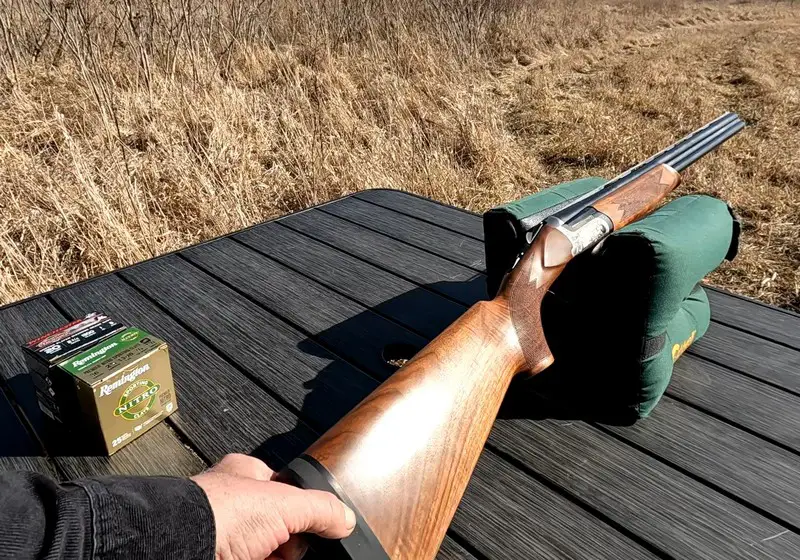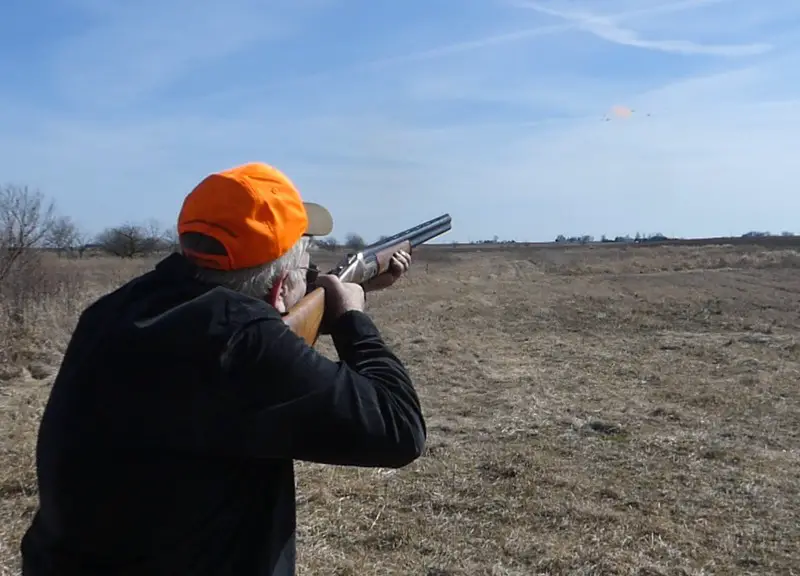|
2024 Fabarm ELOS D2 20 Gauge Game Gun  Illustration courtesy of Fabarm. 
I'm referring to the Fabarm Elos D2 20 gauge as a game gun, as its light weight and responsiveness fits the category as defined by the British. It was W.W. Greener that claimed a shotgun should weigh 96 times the payload weight used to be shootable: a 7/8 oz. payload shotgun would weigh 5-1/4 lbs. and a shotgun used with 1 oz. loads should weigh 6 lbs. There was no actual science behind the Greener theory, but like much of shotgun lore that didn't stop the arbitrary rule making. A fun to carry shotgun is a great proposal, but the reality for me has been largely unpleasant. My old Olin-Kodensha Winchester 101 was a harsh shoulder-jabber. I've had the same unsavory results with an alloy 20 gauge Cynergy, and an instantly painful Benelli Ultra Light. All of these guns are no longer available, although there is a plastic-ribbed Montefeltro Ultra Light recently introduced. Merely getting a shotgun to go bang a couple of times isn't what I'm looking for, for no matter how light I need a shotgun that can make it across the skeet field a couple of times reasonably comfortably as well. A shotgun that isn't fun to practice with doesn't get practiced with much. Making lightweight shotguns is nothing new at all,
but the most common mass-produced lightweight shotguns of a
few decades ago such as the Franchi 48-AL have been dropped
from production. It isn't easy to make a lightweight O/U
shotgun with perfect balance, for many shotguns have
excessively heavy barrel sets that combined with alloy
receivers result in miserably handling shotguns. In the case
of several cheaper Turkish shotguns, alloy receivers are used
along with heavy barrels and the result is a very long ways
from ideal.
 That mercifully brings me to the 2024 Fabarm D2 20
gauge, which is engraved DII on the bottom of the receiver
as shown above. Throwing in a Roman numeral might be
confusing, but of course Rome is in Italy. Having tested
several versions of the Fabarm Elos over the last twelve years
(Elos Deluxe, DII, B2, Elos 2 Elite, Orvis exclusive models)
the guns have always been extremely well-balanced.

However, there have been many refinements to the Elos, some apparent and some unannounced. The receiver is a bit more rounded, there are improved sears and hammer springs, the forearm has been redesigned, and the barrel set is slightly lighter. Bruce Buck called this gun probably the best-balanced aluminum-frame 20-gauge O/U I have handled. In times past, the 12 gauge D2 had a steel breech insert, while the 20 and 28 gauges were all Ergal 55 alloy. Now, steel breech inserts have been added to the 20 and 28, shown above, making the gun more robust and durable in my book. There are other features present and not present that are important to me, but perhaps not as important to others. I appreciate that the D2 is available with cast for right and left-handed shooters, not just the more common generic straight stocks. I also appreciate that the D2 has no annoying center bead, and no annoying plastic light pipes, either: it has a single nickel bead at the muzzle, just the way God intended. The trigger has a pleasant, stippled face.
 This
D2
originally weighed 5 lbs., 14 oz. A Pachmayr SC100 recoil pad (above) was
added, keeping the identical length of pull: that added a
grand total of one ounce, bring the current weight to 5 lbs.,
15 oz. Naturally, I wanted to see how the recoil was, wearing
only a thin shirt. I started with 7/8 oz. 1300 fps loads, then
went to 1 oz. 1300 fps loads, then to 1-1/8 oz. 1300 fps
loads, and finished with 1-1/4 oz. 1185 fps loads. Recoil was
not uncomfortable with any of those loads, though I certainly
could feel more pressure against my shoulder with the 1-1/4
oz. loads. I'll call the 7/8 oz. recoil pulse quite mild,
softer shooting than 20 gauge inertia guns that are heavier. I
attribute this to the excellent stock design and gun fit along
with significant help from the SC100 recoil pad. While the
thin field pads and checkered wooden butt-plates may be
stylish, I'll opt for shooting comfort every time . . . and
twice on Sundays.

It seems that 1 oz. of
#5 lead at 1300 fps can shatter a clay pigeon. The triggers are extremely crisp, breaking at 4 lbs. 10 oz. for lower and upper barrels after a very small amount of initial take-up. These are inertia triggers, apparently with an improved re-set though I could not detect any difference from prior models. The buttstock has a slight, hand-filling palm swell. As with all Fabarm guns, the barrels are over-proofed at 1630 BAR, they are 100% Made in Italy, you can use steel shot with the factory chokes through the 9/10 Full. Fabarm USA includes a five-year warranty and a free gun-fitting if you care to visit their Maryland headquarters. Extended chokes that are tungsten-rated are currently in stock and available from Trulock in 12 and 20 gauge. This
is just what I needed for the delicious and nutritious Fabarm
method of fine dining. More info is at https://fabarmusa.com/
. |